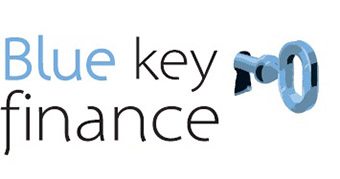Why negative gearing still works
Is negative gearing a strategy that still works?
It’s a timely question. Let’s face it, property yields are low, capital growth is in question, the regulators want to slap limits on investor lending and the banks have responded with higher interest rates. Throw in the changes to depreciation perks and the removal of the travel allowances and it’s enough to make the 1 million or so Aussies who run a property investment at a loss – and those thinking of going down that route – to ask the big question.
I would argue yes, because ultimately negative gearing is not a strategy; put simply, it’s a tax outcome that represents a moment in time. Like a business owner who makes a loss in the start up phase to ultimately make profits and build value over the medium to long term, so too does a property investor consider making a loss for only as long as it takes to build a big enough wealth base so that they too can move into positive-gearing territory, which will provide them with the self-funded retirement outcome they desire. Negative gearing is a means to an end, not a permanent way of life.
Before I dabble into whether negative gearing still works, let’s look at exactly what headwinds property investors face.
The sweeping changes
The Australian Prudential Regulation Authority (APRA) this year introduced restrictions that have impacted lending for investment purposes. The regulator has done this in response to an environment of high housing prices, high and rising levels of household debt, slower income growth and historically low interest rates. As a result, the banks have adopted the APRA recommendations as follows:
- Deposits – Increased need for a larger deposit as most lenders will no longer accept a loan-to-value ratio (LVR) greater than 90% for investors.
- Interest only – for most lenders, for any borrowing above an 80% lvr, interest only facilities are no longer available, regardless of loan purpose. Furthermore, a bank’s loan book cannot have more than 30% in interest only lending.
- Investor lending – no more than 10% growth in investor lending year on year for each lender.
- Interest rate – Increased rates for interest-only lending to be higher than for owner occupied lending.
- New debt – tightened servicing requirements to increase assessment rates on new debts.
- Existing debt – assessment rate on existing debt to be considered principle and interest even if paying interest only.
- Postcode restrictions – some lenders have managed their risk by limiting lending on select postcodes.
- Rental income – some lenders have further discounted rental income assessment from the standard 80% to 75%, and in some cases by as low as 50%.
- Exceptions – if applications don’t meet policy then it’s simply unacceptable, with lenders unwilling to step outside strict lending policy to provide “exceptions”. This is in contrast to owner occupier lending where they’re still happy to consider policy exceptions on a case-by-case basis.
- No investor lending – some lenders are pulling out of the investment lending game altogether.
In addition, the May Federal Budget proposed the following changes that will affect any property investors who exchanged after 7:30pm AEST on May 9 2017:
- Depreciation – The Government will limit plant and equipment depreciation deductions to outlays actually incurred by investors in residential real estate properties. Essentially, this means property investors can only claim depreciation on dishwashers, fans and other fixtures they’ve paid for themselves. Previously, investors who bought established properties could continue to claim depreciation on items they acquired as part of the purchase.
- Travel claims – All travel deductions relating to inspecting, maintaining or collecting rent for a rental property will be disallowed. This applies within your own state as well as interstate.
The hit to cash flow from the reduction in depreciation and travel allowances is not ideal. However, if Melbourne and Sydney were to keep on charging ahead as they have been over the past few years, then we would have set ourselves up for some pain in the future. All the above measures I believe are warranted.
Why invest in property?
But despite these speed bumps, investing in property remains an attractive proposition for building real wealth in the long term. There are many reasons but here are a few to remind ourselves why:
- Big market – The opportunities to build wealth in this market are substantial with a very strong secondary market given it forms an essential human need.
- Self-funded retirement – the growing awareness that superannuation alone will not be enough and the constant changes to the rules. IN addition, the uncertainty around the amount of Government Pension that will be available and the desire to be less reliant on the Government makes it attractive to create a self-funded retirement through property.
- Leverage – this is very appealing for a property investor, as the ability to control a larger asset and get the compounding benefits of the larger value is the single reason why we choose property over any other asset class. Combine leverage and compounding with an investment -grade property and the results are life-changing.
- Low volatility – Particularly in the capital cities and surrounding areas where the demand exceeds supply.
- Simplicity – It’s tangible and easy to understand. After all, it’s an essential need; shelter.
- Control – Unlike other investments, you’re in full control of your property investment; you can make all the decisions and have control over all your returns. You can add value to your investment without having to seek approval from a large company or fund manager.
- Government backed – let’s be honest, the collapse of the housing market would be a disaster for the Government of the day at the ballot box, so protecting this very important asset class is not only in the national interest but politically underpinned.
- Alternatives – They often appear harder to understand, are riskier or are perceived as a poorer return on investment. An investment grade property offers better performance than money in the bank.
The fundamentals
You have to get the fundamentals right from the start. This enables you to positively plan your financial future while creating a safety net to defend your portfolio from external factors outside your control.
The first fundamental for any property investor is asset selection. Picking a poorly performing asset whose value doesn’t grow, or worse, falls is by far the biggest derailer to any portfolio. So, it’s important to know that not all property makes for a great investment. The law of supply and demand exists in the property market as it does in any market, so ignore this fundamental at your peril.
The second fundamental is to correctly finance the property. You must get a borrowing strategy that takes into account not only the current purchase but also planning for any future purchases. Providing a buffer as well as ensuring that the banks are not dictating the terms through cross-securitising will give you the agility to navigate whatever the market throws at you.
Third, investing in property is all about time in the market. Savvy property investors see short term as being ten years and long term as being 20 years plus. The power of compounding is brilliant but only if you give it time to work its magic.
If you hold for the long term, your reliance on the negative gearing benefits well and truly diminish over time.
And finally, to the common question of “When should I buy my next investment property?” The answer is the same no matter what the market sentiment is. Assuming you’re a long-term investor then it’s simply “When your cash flow allows” – if you have sufficient surplus cash flow above your current and short term needs then you should consider adding a property to your portfolio.




Leave a Reply
Want to join the discussion?Feel free to contribute!